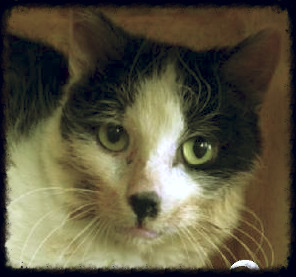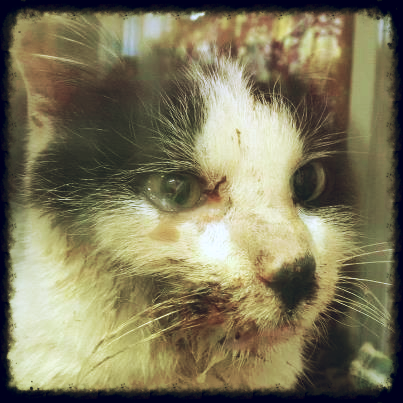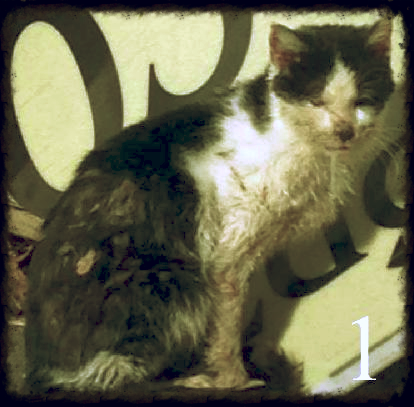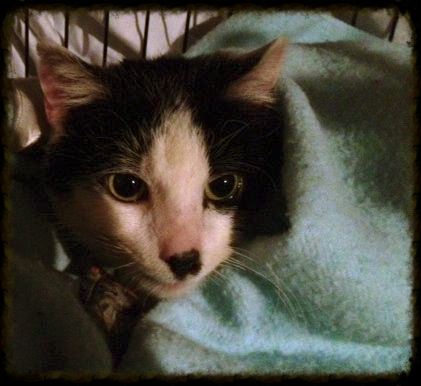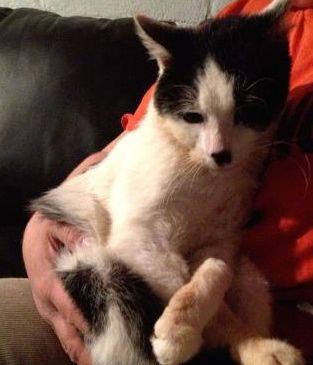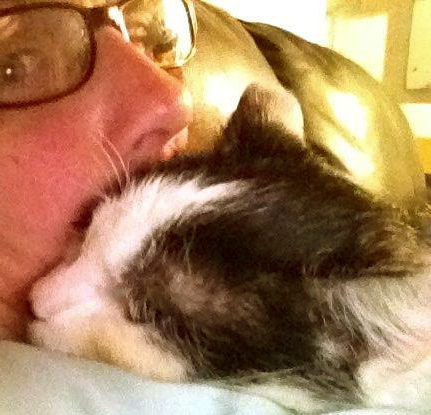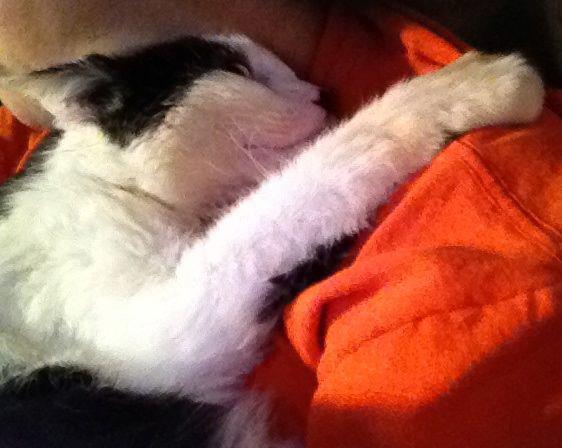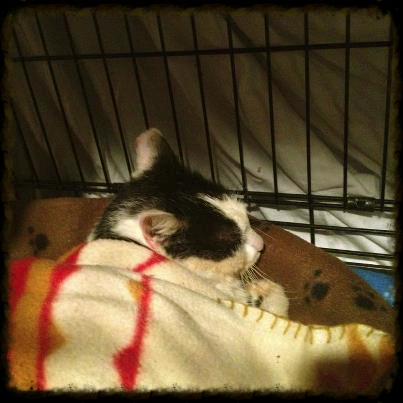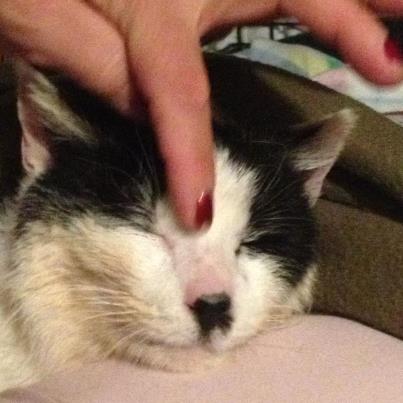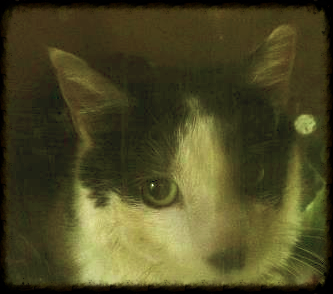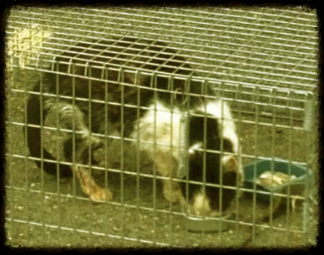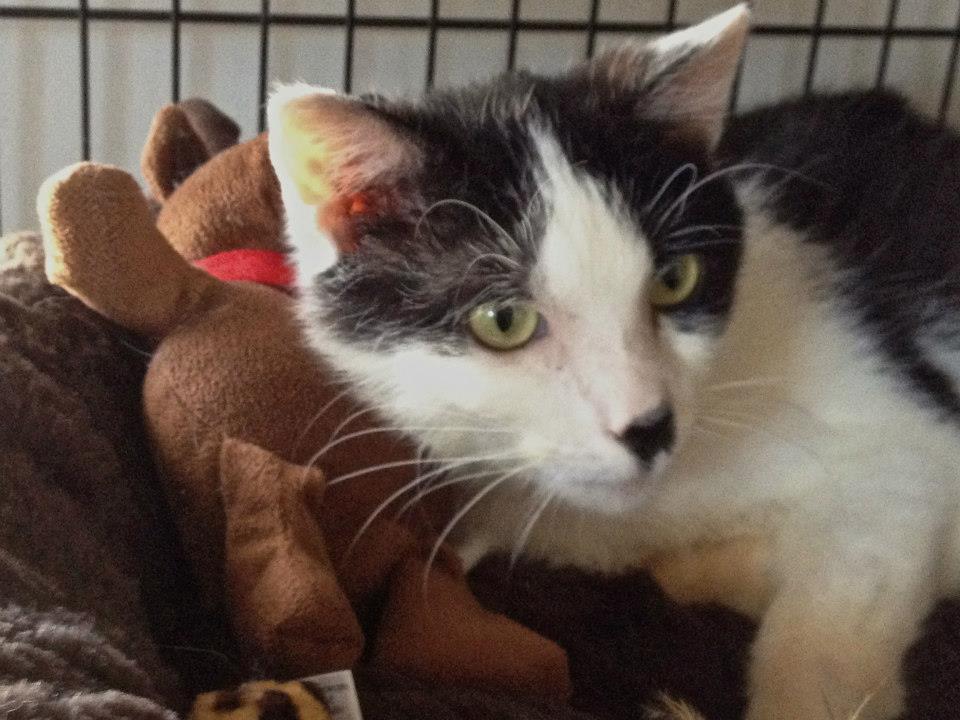January of 2013 I was checking my newsfeeds on Facebook and kept coming upon so many urgent animal requests and becoming more and more upset that I couldn't help each and every one.
I came upon a feral cat named Atlas that was posted by Randall's Rescue of New Jersey. They had trapped
him, rushed him to the vet and got a diagnosis of severe stomatitis. They were desperate to raise funds for
the surgery that was required to give this boy a chance at a pain free life. Knowing all about the pain and
trauma of this terrible disease, I knew immediately I had to do something to help. Seeing this poor boys photo
was all it took to formulate a plan. I asked a LOT of people to scrounge around the the bottom of their purses,
their sofas cushions, pockets, piggy banks, whatever and toss what you find in an envelope and mail it out. If
enough people do this, a lot of money can be raised.
Even one tiny dollar can help if enough of those are collected. Thus,
the Dollar Club was born. Within hours, we had the club name,
our facebook page, our first featured needy animal and lots of
members to help.
Thanks to Atlas, we have helped several needy animals and a
lot more to come! His pain and suffering have not been in
vain, for without it, this club may not be in existance today.
Thank you Cindy Randall of Randall's Rescue for seeing beyond
his pain and helping this cat find peace and health and to live a pain free life regardless of the cost or
the hard work involved. You are truly an angel on earth! And Atlas, thank you for surviving and showing us all that feral cats are worthy of the same love, affection and medical treatment as any other living breathing creature.
ATLAS UPDATE********** Dr B just called!! Said Atlas is a trooper!! He was in surgery for FOUR hours and all of his teeth were removed. It was a very tedious and involved surgery but he managed to carefully remove all of his teeth and roots without disturbing the bone or the nasal cavity!! He said Atlas lost a lot of blood during the surgery but that his levels are still in a good range. His mouth is all closed up with a good amount on tension. He said he did run into a surprise that one of his lower teeth had THREE roots and should only have TWO, but they took care of that too. He was microchipped also. He said the surgery went as good as can be expected and he is very happy with how things went. Atlas will be staying over night at the hosptial being monitored - as well as getting IV FLUIDS and pain medication. I will be calling later tonight to check on this progress. Poor boy must be in so much pain. Let thehealing begin.
*****ATLAS UPDATE********* Talked to Dr. B this morning ~ he said that Atlas did great over night! He ATE DINNER AND BREAKFAST!! I will need to continue to medicate to help ensure no infection and rinse out his mouth to help eliminate any food that may get stuck in his stiches. He has the will to eat and has been a very good patient. Atlas will also be on pain medication for a while.
Before and after surgery photos and Vet updates
So swollen after his extensive surgery but doing well and accepting some holding.
Atlas was a feral, long before Randall's Rescue got a hold of him and showed him what love and caring can feel like.
Atlas is finally off all meds, is playing with toys and is loving life especially as long as it includes some much needed TLC.
Yes, this former feral is a true miracle as Is Cindy who rescued him, the people who sent donations, the vet who operated on, tended to and all of the people who prayed for him.
Atlas has been adopted and is now living the high life in his new forever home!
Relationship Between Stomatitis and Hyperthyroidism in Cats?
My patient is a 12-year-old, male hyperthyroid cat who had a full mouth extraction done 4 years ago because of severe oral disease. Since that time, this cat had required Depo-medrol injections every 1-2 months to help keep the stomatitis under control.
About a year ago, the cat developed hyperthyroidism and was treated with radioiodine. Since that time, he has remained euthyroid. But unexpectedly, his stomatitis has also completely resolved, and no further steroid treatment has been needed.
Nothing else changed in the household — i.e., no diet changes, no other medications, and this has always been an indoor cat. I am happy for the cat (and the owner), but am curious if you have an explanation to explain the apparent connection between the stomatitis and hyperthyroidism?
My Response
I've seen a few hyperthyroid cats over the years whose concurrent oral disease improved after they were treated with radioiodine. I do not know for certain why their oral lesions sometime respond so well to correction of the hyperthyroid state.
Are some hyperthyroid cats iodine deficient?
One theory is that some of these hyperthyroid cats are iodine deficient (even on a "normal" iodine diet) because of their increased need for iodine to make thyroid hormone (1). Once we cure them with radioiodine, their need for iodine goes down because now they are no longer making excess amount of thyroid hormone.
Figure 1. Chemical structure of thyroxine.
Notice that each T4 molecule contains 4 atoms of iodine atoms
Remember that each T4 molecule contains 4 iodine atoms (Figure 1), whereas each T3 molecule contains 3 iodine atoms.
Salivary glands normally concentrate iodine
Iodine appears to be very important for oral health (2,3). Normally, the salivary glands have the capacity to concentrate iodide as well as the thyroid tissue. The iodide is then secreted into saliva such that its salivary concentration has been reported to vary from 20 to 100 times that found in the serum (4,5).
Figure 2. Thyroid scintigraphy of a normal cat.
Notice the similar uptake of the tracer in the thyroid lobes and salivary glands. Also note that the stomach also concentrates the radionuclide to some extent (area of uptake on bottom of scan image).
In proof of this, remember that the salivary glands can be seen to concentrate ("take up") radioiodine with thyroid scintigraphy very well (see Figure 2) —equal to the thyroid glands in a normal cat (6-8).
Iodine deficiency and immunity
Based on a number of studies in man and other species, it's clear that iodine has many extra-thyroidal functions in the body. Iodine plays an important role in the immune response. It also has anti-inflammatory and anti-oxidative actions (2,3,9-12).
Bottom Line
Marked variation of iodine levels between cat foods have been reported in studies of commercial foods, in which the iodine content between foods varied by a factor of 30-fold (13-15). It also possible that some cats would be consistently fed a low-iodine diet for prolonged periods, leading to an iodine-deficient state.
So it is possible that this cat has been chronically iodine deficient, which may have become worse when hyperthyroidism developed. By treating the hyperthyroidism, the total body need for iodine would be expected to decrease. So that might explain why the stomatitis improved after correction of the hyperthyroidism with radioiodine.
Again, I'm not talking about the use of low-iodine diets (y/d) for hyperthyroidism here, but that diet could, at least theoretically, make the oral disease worse in these cats.
References:
Wakeling J, Elliott J, Petrie A, et al. Urinary iodide concentration in hyperthyroid cats. American Journal of Veterinary Research 2009;70:741-749.
Venturi S, Venturi M. Iodine in evolution of salivary glands and in oral health. Nutrition and Health 2009;20:119-134.
Brownstein, D. Iodine: Why you need it, Why you can't live without it. Medical Alternative Press; 3rd edition. 2004.
Myant NB. Iodine metabolism of salivary glands. Annals of the New York Academy of Sciences 1960;85:208-214.
Mason DK, Harden R McG, Alexander WD. The salivary and thyroid glands: A comparative study in man. British Dental Journal 1967;122:485-489.
Beck KA, Hornof WJ, Feldman EC. The normal feline thyroid. Technetium pertechnetate imaging and determination of thyroid to salivary gland radioactivity ratios in 10 normal cats. Veterinary Radiology & Ultrasound 1985;26:35-38.
Peterson ME, Becker DV. Radionuclide thyroid imaging in 135 cats with hyperthyroidism. Veterinary Radiology 1984;25:23-27.
Broome MR. Thyroid scintigraphy in hyperthyroidism. Clinical Techniques in Small Animal Practice 2006;21:10-16.
Marani L, Venturi S, Masala R. Role of iodine in delayed immune response. Israeli Journal of Medical Science 1985;21:864.
Venturi S, Venturi M. Iodine, thymus, and immunity. Nutrition 2009;25:977-979.
Miller DW. Extrathyroidal benefits of iodine. Journal of American Physicians and Surgeons 2006;11:106-110.
Ware CM, Wishner LA. The lipid antioxidant properties of iodine compounds. Lipids 1968;3:182-183.
Johnson LA, Ford HC, Tarttelin MF, et al. Iodine content of commercially-prepared cat foods. New Zealand Veterinary Journal 1992;40:18-20.
Ranz D, Tetrick M, Opitz B, et al. Estimation of iodine status of cats. Journal of Nutrition 2002;132 (suppl 2):1751S-1753S.
Edinboro CH, Scott-Moncrieff JC, Glickman LT. Feline hyperthyroidism: potential relationship with iodine supplement requirements of commercial cat foods. Journal of Feline Medicine Surgery 2010;12:672-679.
0
